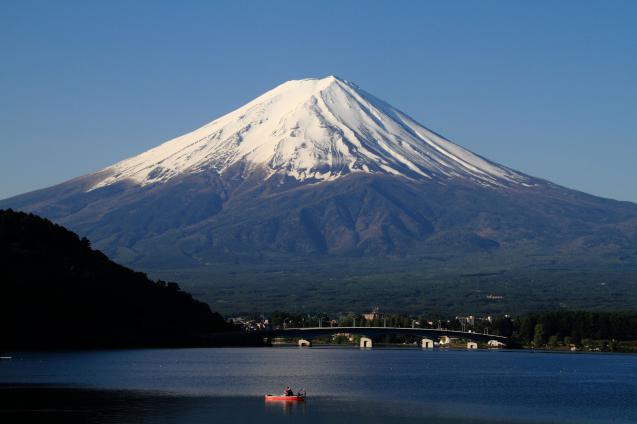
Fujisan, known as Mt. Fuji in the world, is Japan's highest mountain at 3,776 meters. The mountain is worshipped as a sacred place for centuries and now recognized as a symbol of Japan across the world.
Mount Fuji is a perfectly shaped active volcano located on the border between Yamanashi and Shizuoka Prefectures and can be seenfrom Tokyo in a clear days.
The scenery of the mountain has been included as an inspiration for poetry, work of arts or any creative activities not just in Japan but from people around the world because of its exceptional beauty and scenery.
Fujisan was added as a World Heritage Site on 2013. The other sites included were Shinto shrines, historical walking trails and famous lakes and other related sites that give the mountain its natural value.
Things to see
If you have enough strength, the best way to enjoy and appreciate Japan's iconic mountain is by experiencing hiking on its trails and it will surely be one of the most unforgettable and memorable experience you will be having in Japan.
Another easy way to view the Mt. Fuji is by riding a train to Nagoya, Kyoto and Osaka and by staying at a nearby spot like the Fuji Five Lakes, Hakone, or a hot spring resort.
The famous trailhead of the mountain are the 5 stations that is composed of four trailheads and the most popular is the Fuji Subaru Line. From Shinjuku Station/Tokyo, you can reach Fuji Subaru Line 5th station by the Mount Fuji hiking buses for 2700 Yen. It has 6-10 round trips per day during the climbing season and 2 roundtrip during off-season.
By taxi and car rental is recommended to the 5th station of the mountain that usually cost 12,000 Yen from Tokyo.
If you are planning to climb the mountain, the official climbing season is early July to mid September. It's a perfect season for climbing as it is free of snow and weather is mild. Mount Fuji is divided into 10 trail stations, first being the foot of the mountain and the 10th being the summit of the mountain. In climbing, remember the following:
- Wear proper shoes and make sure it's comfortable to wear on rocky and steep walking trails of the mountain.
- Wear proper clothes that has protection against varying temperature while in the hike.
- Bring enough food even though there are several mountain huts that offers a variety of food. It's must to bring your own food and water during the hiking.
- Bring money. In case you run out of water or food and for emergency purposes.
There is also an admission fee on the climbing season that costs 1000 yen per hiker that will be collected on the trailhead. Staying overnight is also allowed in the mountain hut that usually cost around 5000 Yen per person as well as taking a rest that costs around 2000 Yen.
Submit Itinerary
Signup
- Sign Up
- Already a member? Login Now!
